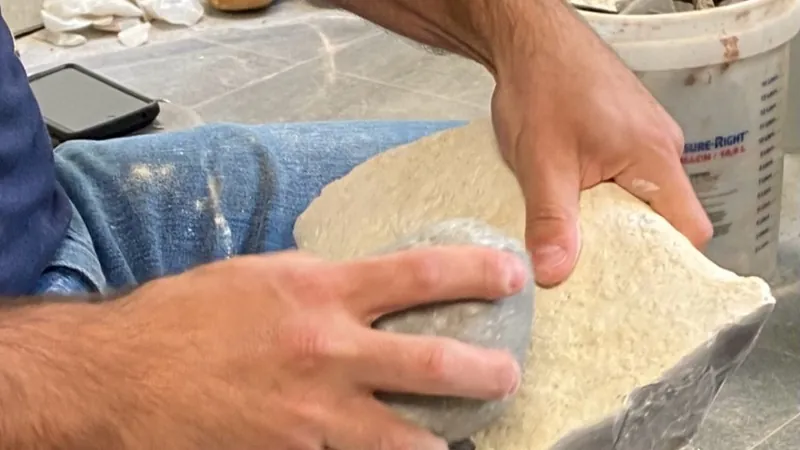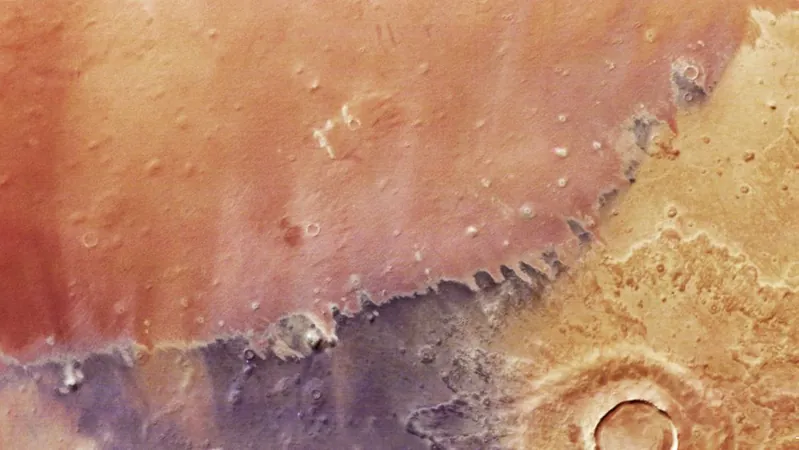
The Groundbreaking Work of Experimental Archaeologist Metin Eren: Debunking Myths and Unlocking Ancient Technologies
2025-01-02
Author: Sarah
Introduction
In a fascinating exploration of ancient cultures, Metin Eren, a notable experimental archaeologist at Kent State University, is pushing the boundaries of what we know about our past. Eren's lab is known for its unique approach to analyzing how ancient tools were made and used, with experiments ranging from the bizarre to the illuminating. One of the most discussed projects in his lab was inspired by a legend surrounding an Inuit man who purportedly created a knife from his own frozen feces in the 1950s. During a study in 2019, Eren replicated this unusual method himself, crafting blades from frozen stool and testing their effectiveness on pig hide. The results were less than satisfactory for the myth but earned Eren an Ig Nobel Prize in recognition of his unconventional experiments.
Scientific Rigor
Eren’s work goes beyond mere myth-busting; his team is deeply engaged in the serious science of experimental archaeology, producing around 15 to 20 research papers annually. He emphasizes that what might seem like quirky experiments serve to enhance our understanding of the techniques and technologies of ancient peoples. “Making a stone tool is just as vital to archaeology as pouring chemicals in a beaker is to chemistry,” he explained, defending the rigor of his scientific approach.
Interdisciplinary Collaboration
Over the years, Eren has cultivated a diverse group of students with unique skill sets, such as musicians and tattoo artists, who bring valuable hands-on abilities to his research. This interdisciplinary collaboration allows them to merge practical skills with scientific inquiry. For instance, one student explored the musical pitches generated through flint-knapping, illustrating the range of talents that Eren appreciates in his team.
Early Inspiration
Eren’s journey into archaeology started early in life, sparked by an internship at the Cleveland Museum of Natural History while he was still in high school. Guided by a passion for problem-solving, he delved into understanding not just what artifacts are but how they might have functioned in their time. His curiosity prompted him to pioneer various methods in experimental archaeology, leading to noteworthy scholarly contributions even during his undergraduate studies.
Flint-Knapping Challenges
One of the most fascinating aspects of Eren's work involves flint-knapping, an ancient technique for shaping stone tools. Engaging in this process can be both painful and perilous, as injuries are common and can sometimes be severe. Using 25 years of experience, Eren demonstrates how to create everything from hand axes to more refined blades while emphasizing safety and precision—making it clear that each strike with a tool is informed by complex scientific principles.
Mysteries of Stone Age Tools
A major focus of Eren’s research involves the mysteries surrounding tools from the Stone Age. He ponders numerous unanswerable questions that often arise during analysis, such as the specific types of adhesives used to attach blades to handles or the types of wood that may have been utilized—elements that, unfortunately, seldom survive the passage of time. He calls these elusive pieces of information “the Poltergeist of the Unpreserved,” highlighting how the lack of evidence complicates the interpretation of archaeological findings.
Challenging Accepted Narratives
Eren’s investigations often challenge accepted narratives within archaeology. For instance, he questions common assumptions about artifacts like Clovis points—a type of stone tool associated with early North American hunters. Through experiments with modern-day hunters, Eren's lab demonstrated that these points were effective not only for hunting but also for butchering animals, thereby showcasing their multifunctionality.
Modern Contexts and Collaborations
The inquiry doesn't stop there. Eren's lab collaborates with outdoor lifestyle influencers to test ancient technologies in a modern context, contributing to the evolving understanding of how these tools worked in practical applications. Eren even leads various projectile experiments with tools like atlatls—devices that enhance the efficiency of spear-throwing—which reveal interesting insights into ancient hunting techniques and gender roles in hunting practices.
Forensic Applications and Broader Interests
Eren's contributions extend into forensic studies as well, where he creatively applies archaeological methods to contemporary challenges. His recent work on bullet ricochet marks underscores his broader interest in piecing together historical stories and their implications for both past and present contexts.
Advocacy for Further Research
As he continuously refines his approach to experimental archaeology, Eren advocates for a shift in how we perceive archaeological research. He emphasizes the need for replication studies in the field, stressing that findings should lead to further inquiry rather than be seen as conclusive.
The Future of Experimental Archaeology
Through Eren's work, experimental archaeology emerges as a promising frontier that combines the history of human innovation with rigorous scientific exploration. It addresses one of the core questions facing the discipline: how can we understanding the evolving interplay of culture and technology? Eren passionately argues that as archaeological sites become depleted, experimental archaeology will play an essential role in keeping the study of human history vibrant and substantive.
Conclusion
In a world where myths and legends often overshadow facts, Eren’s lab stands as a beacon of rigorous inquiry, proving that even the most outlandish stories can lead to profound insights about our shared human history.


 Brasil (PT)
Brasil (PT)
 Canada (EN)
Canada (EN)
 Chile (ES)
Chile (ES)
 Česko (CS)
Česko (CS)
 대한민국 (KO)
대한민국 (KO)
 España (ES)
España (ES)
 France (FR)
France (FR)
 Hong Kong (EN)
Hong Kong (EN)
 Italia (IT)
Italia (IT)
 日本 (JA)
日本 (JA)
 Magyarország (HU)
Magyarország (HU)
 Norge (NO)
Norge (NO)
 Polska (PL)
Polska (PL)
 Schweiz (DE)
Schweiz (DE)
 Singapore (EN)
Singapore (EN)
 Sverige (SV)
Sverige (SV)
 Suomi (FI)
Suomi (FI)
 Türkiye (TR)
Türkiye (TR)
 الإمارات العربية المتحدة (AR)
الإمارات العربية المتحدة (AR)